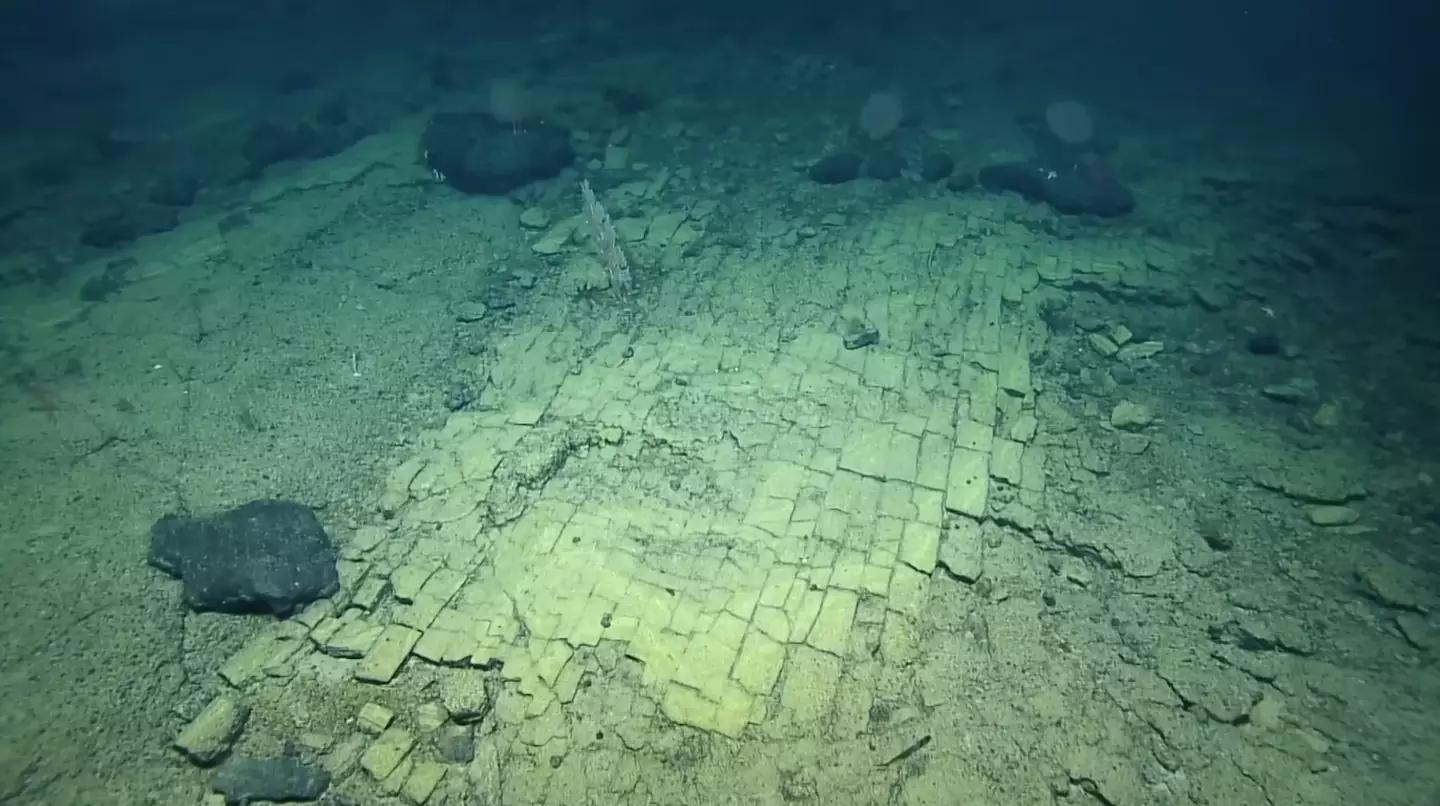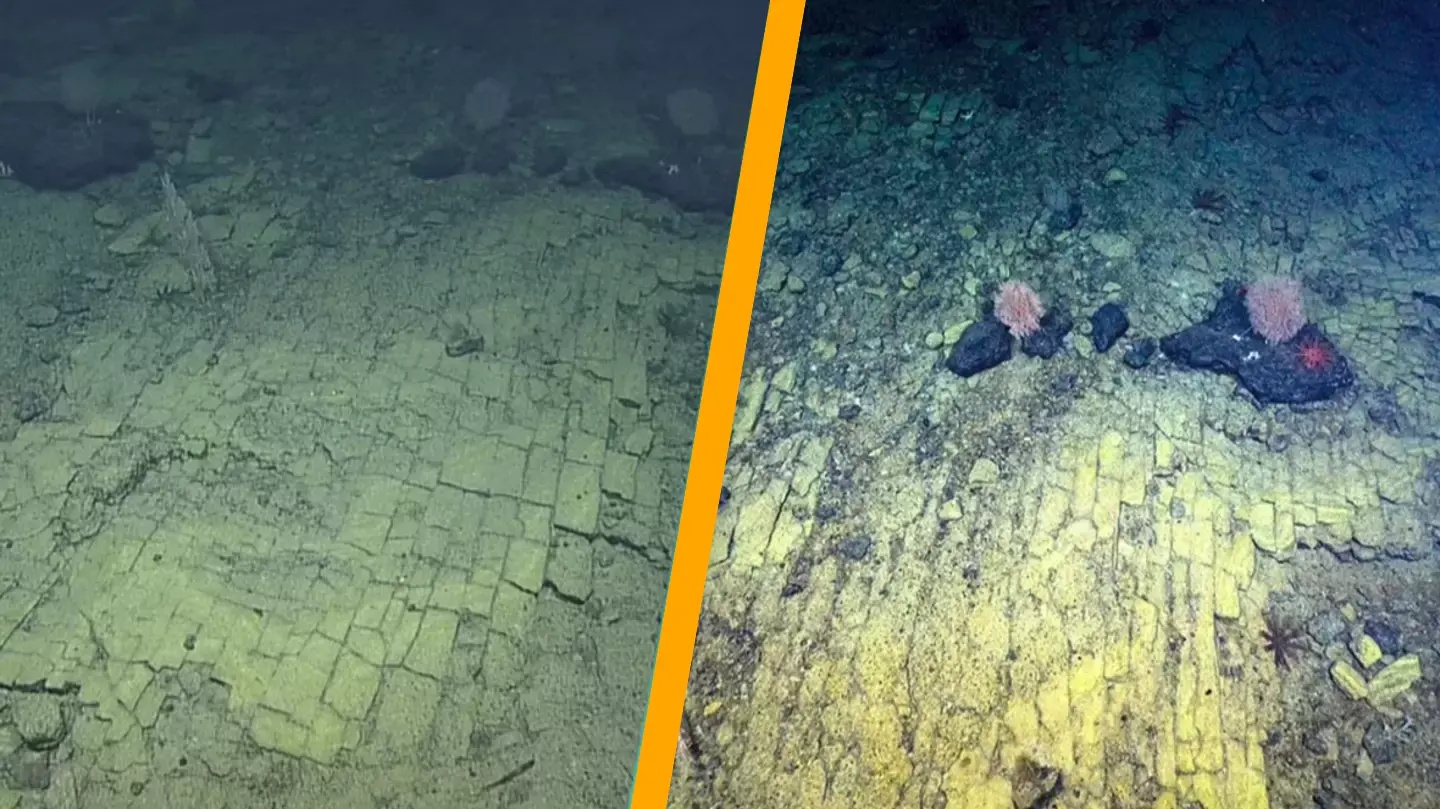While exploring the ocean depths in Hawaii, researchers discovered what seemed to be a ‘yellow brick road’ stretching across the ocean floor.
Although there was no scarecrow, lion, or tin man in sight, one researcher humorously suggested it could be ‘the road to Atlantis’ rather than leading to a wizard.
The concept of the ‘lost city of Atlantis’ has fascinated many over the years, making any undersea clue worthy of further investigation.
This intriguing sight was identified by deep-sea researchers at the Liliʻuokalani Ridge within the Papahānaumokuakea Marine National Monument (PMNM) in the Pacific Ocean, near Hawaii.

The formation consists of yellow-tinged stones placed at neat angles beside each other, almost as if intentionally arranged.
Given this arrangement, it’s easy to imagine a vast, underwater city at the road’s end, prompting a researcher to jokingly call it the ‘road to Atlantis’ in their video.
However, the team soon clarified that the formation was a natural occurrence.
In a statement, the team noted: “At the summit of Nootka Seamount, the team spotted a ‘dried lake bed’ formation, now IDed as a fractured flow of hyaloclastite rock (a volcanic rock formed in high-energy eruptions where many rock fragments settle to the seabed).
“The unique 90-degree fractures are likely related to heating and cooling stress from multiple eruptions at this baked margin.”
They further explained: “What may look like a yellow brick road to the mythical city of Atlantis is really an example of ancient active volcanic geology.
“Our Corps of Exploration have witnessed incredibly unique and fascinating geological formations while diving on the Liliʻuokalani Ridge within the Papahānaumokuakea Marine National Monument.”
The PMNM is one of the largest contiguous fully-protected conservation areas globally, covering 582,578 square miles of the Pacific Ocean—an area larger than all of the US’s national parks combined.
It is one of only 24 World Heritage sites in the US, joining Hawaii Volcanoes National Park to become one of two in Hawaii.
The vastness of the area means that only a small percentage has been explored, so it isn’t entirely surprising that researchers encountered some remarkable sights.
In their statement, the researchers also shared: “Throughout the seamount chain, the team also sampled basalts coated with ferromanganese (iron-manganese) crusts from different depths and oxygen saturations, as well as an interesting-looking pumice rock that almost resembled a sponge.”

